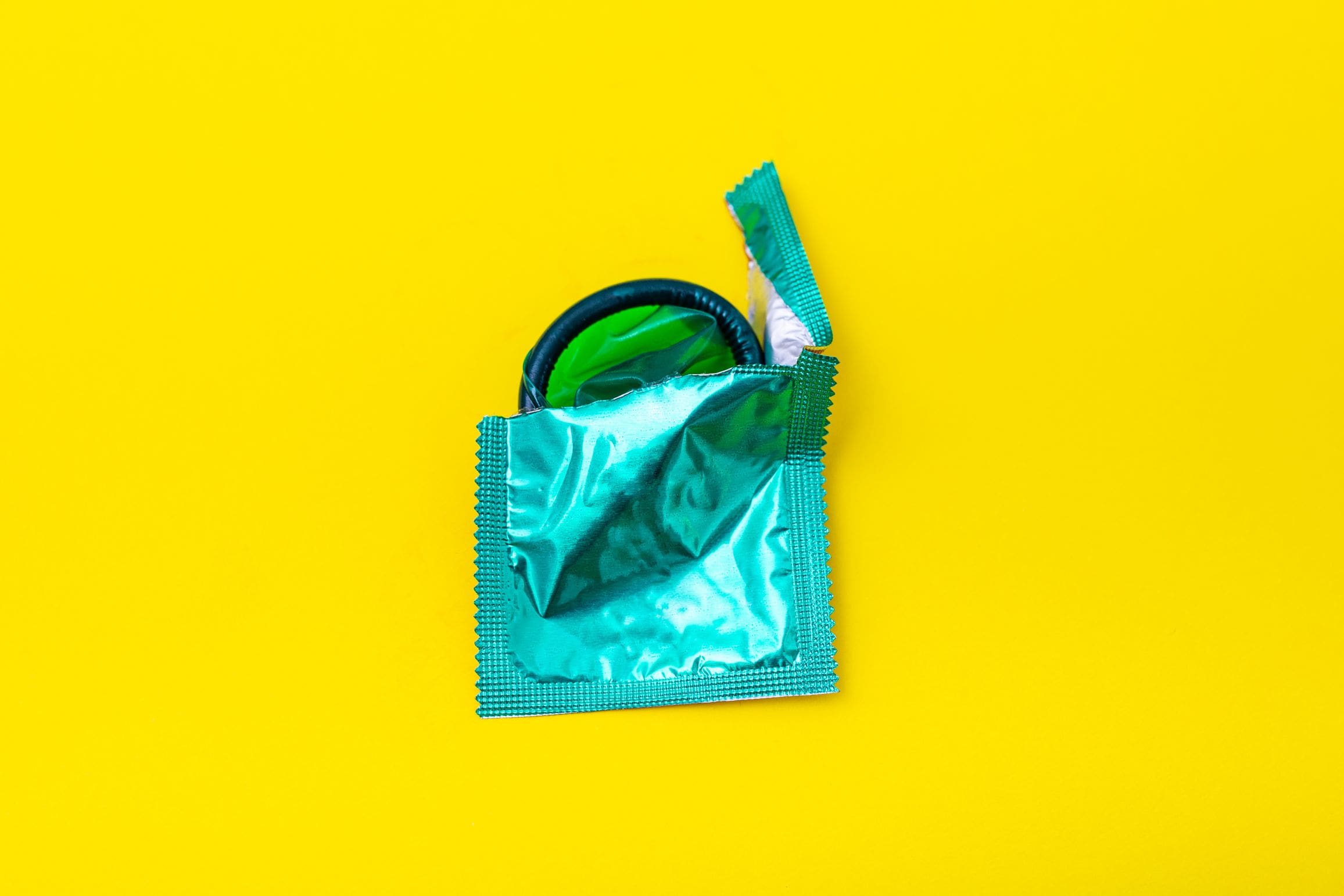Male condoms, or sheaths, are a type of barrier contraception that can be used to prevent both pregnancy and the transmission of sexually transmitted infections (STIs). Most condoms are made of latex (rubber) but condoms made from polyurethane are also available.
Condoms come in different sizes, thicknesses, flavours, textures and colours, however, it should be noted that novelty condoms are not always a reliable form of contraceptive or protection against STIs.
How do condoms work?
Condoms provide a physical barrier to sperm and STIs. A condom is put on a man’s erect penis before sex. It collects the sperm and semen and prevents the exchange of body fluids between sexual partners.
How to use a condom
Here are some things to take into consideration to ensure you use condoms effectively.
The condom must fit correctly: It is important that the condom fits correctly to reduce the risk of it breaking or slipping off.
Use condoms with appropriate lubricants: If possible, condoms should always be used with lubricants to make them less likely to break. When using latex condoms, use only water-based lubricants, as oil-based lubricants can damage condoms. Suitable lubricants include Ansell Personal Lubricant, K-Y Jelly and Wet Stuff.
Unsuitable lubricants (such as baby or cooking oils and massage oil) may damage condoms. Petroleum jelly or butter can destroy the condom barrier within 60 seconds so these should NOT be used.
Non-lubricated condoms are available for those people who are sensitive or allergic to the lubricant.
Avoid damage to the condom: Condoms may be damaged by heat or if they are handled roughly. Male condoms may also be damaged if the vagina is too dry or they are used for anal sex, so a lubricant will help avoid this.
Antifungal creams can damage condoms: Vaginal antifungal creams for thrush can damage condoms.
Follow the instructions: For the condom to work properly, carefully follow the instructions provided on the packet or by your healthcare provider. There should be no genital contact before the condom has been put on. The penis should be withdrawn soon after ejaculation, while still erect. Hold the base of the condom during withdrawal, to prevent any leakage of sperm. The condom should be disposed of after use.
Don’t wear 2 condoms at once – this increases the chance of breakage – and also don’t use a male condom and a female condom at the same time – as this will also increase the risk of breakage.
Store condoms correctly: Because condoms are perishable, they need to be kept in a cool, dry place away from heat or sunlight.
Check the use by date: Condoms have a use-by date – make sure the expiry date has not passed and discard any condoms if they are beyond their expiry date.
Dispose of the condom after use: Don’t flush used condoms down the toilet – wrap them in tissue and put them in the garbage.
What if a condom fails?
If you have unprotected sex or you think the condom might have failed by leaking or breaking, see a doctor or pharmacist as soon as possible. Emergency contraception (the ‘morning after pill’) is available without a prescription, but must be used within 3-5 days of unprotected sexual intercourse. You may also need to be checked for STIs.
Effectiveness at preventing pregnancy
The effectiveness of condoms as a contraceptive method can be measured for perfect use and typical use.
- Perfect use is when instructions are followed precisely every time you have sex. The failure rate for perfect use of male condoms is about 2 per cent. So, if condoms are used perfectly by 100 couples for a year, about 2 women will become pregnant.
- Typical use is what tends to happen in reality. Typical use failures include failures due to incorrect use. The failure rate for male condoms is about 18 per cent in the first year of typical use. The effectiveness of condoms improves when used by couples who are experienced in using them.
Safe sex using condoms
It is important to practise safe sex, both to avoid unwanted pregnancies and to reduce the risk of contracting a sexually transmissible infection (STI) such as chlamydia, genital herpes, hepatitis, gonorrhoea or HIV. Condoms offer the best protection against STIs, but note that they only protect the skin that is covered by the condom.
A woman taking an oral contraceptive pill will not be protected against STIs, only against pregnancy.
Advantages of condoms
- Condoms can reduce the risk of sexually transmitted infections, including HIV, and may be used for this purpose alone.
- They are easy to use.
- They are relatively cheap and easy to buy.
- Condoms can be easily carried in your wallet or purse.
Disadvantages
- Some people have a reaction to latex or lubricants
- Condoms can break or slip off if used incorrectly.
- Couples must be motivated to use condoms correctly every time they have sex.





